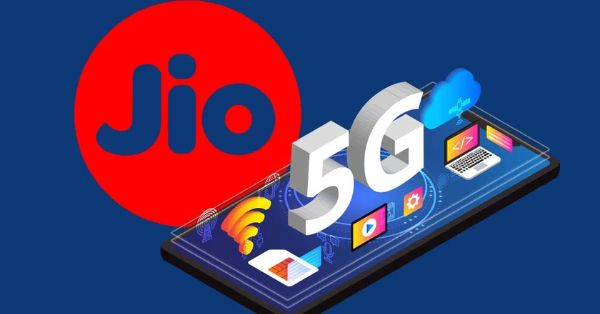Mint Mobile launches MINTernet: 5G home internet on T-Mobile
Mint Mobile is expanding from prepaid wireless into fixed wireless access, introducing a 5G home internet offer that targets price-sensitive households and small offices with unlimited data and headline speeds up to 415 Mbps for as low as $30 per month.
What Mint launched: MINTernet 5G home internet
The company’s “MINTernet” is a self-install 5G home internet service that rides on T-Mobile’s nationwide 5G network, following T-Mobile’s acquisition of Mint’s parent Ka’ena Corporation in 2024.
Mint advertises unlimited data and peak download speeds up to 415 Mbps, with actual performance varying by location, signal quality, and cell-site load.
The offer leans into prepaid simplicity: no annual contracts and quick activation, with a plug-and-play 5G gateway for in-home Wi-Fi and Ethernet connectivity.
At a starting price of $30 per month, Mint undercuts many cable and fiber entry tiers and lands below other national 5G FWA offers, which typically range from $35 to $60 depending on mobile bundle eligibility.
Positioning vs incumbents: T-Mobile, Verizon, AT&T, cable
This move places Mint alongside T-Mobile Home Internet and Verizon 5G Home in the fast-growing FWA segment, and in the same consideration set as AT&T Internet Air in markets where it is available.
For T-Mobile, Mint’s branded FWA extends reach into value-conscious households and microbusinesses that may not qualify for, or want, postpaid bundles, while still monetizing mid-band 5G capacity.
For cable operators such as Comcast and Charter, another low-friction, low-price broadband option increases churn pressure in markets without fiber competition.
The launch also broadens Mint’s product portfolio beyond voice and mobile data, adding an in-home anchor service that can drive stickiness and cross-sell.
Why 5G FWA matters now for broadband and SMBs
Fixed wireless has matured from a stopgap to a mainstream broadband alternative as mid-band 5G capacity and coverage improve across suburban and exurban areas.
FWA growth and 5G capacity economics
U.S. operators have invested heavily in 3GPP 5G NR across mid-band spectrum, particularly T-Mobile’s 2.5 GHz holdings, enabling large capacity per sector at attractive cost per bit.
That capacity can be monetized efficiently during off-peak periods and in cells with headroom, making FWA a compelling incremental revenue stream without new last-mile construction.
As networks transition more traffic to 5G Standalone, with wider carrier aggregation and advanced MIMO, usable FWA capacity and consistency tend to improve, though performance remains highly location-dependent.
Implications for SMBs and distributed edge connectivity
For small offices, pop-up retail, construction sites, and home offices, prepaid FWA offers fast turn-up, predictable monthly cost, and mobility if you relocate within coverage.
It is a practical fit for secondary or backup WAN in SD-WAN designs, improving resilience versus a single wired link and enabling path diversity without truck rolls.
However, most FWA services use carrier-grade NAT and do not provide static public IP by default, which can affect inbound services and some VPN configurations; enterprises should validate application and security requirements before committing broadly.
Key 5G FWA caveats and technical considerations
Despite the attractive price and simplicity, buyers should assess network, device, and policy details that shape real-world outcomes.
Coverage limits and MVNO deprioritization dynamics
FWA availability is gated by local sector capacity, and it can be restricted or paused in congested areas as mobile usage grows.
As an MVNO-branded service on T-Mobile’s network, Mint’s traffic may be subject to network management and deprioritization during busy times, which can reduce throughput or increase latency versus postpaid tiers.
Performance can swing based on distance to the serving site, indoor placement, building materials, and radio bands in use (low-band for reach, mid-band for capacity), so site surveys and trial periods are valuable.
5G gateway and in‑home Wi‑Fi performance
The 5G gateway is a key determinant of user experience, translating outdoor 5G signal into indoor Wi‑Fi and Ethernet; placement near a window and elevation typically improves signal quality.
Most current gateways provide Wi‑Fi 6 and multiple LAN ports; confirm device specs for your environment, including bridge mode support, QoS settings, and whether the unit can integrate cleanly with existing routers or SD‑WAN CPE.
Plan for power backup if continuity matters; unlike passive fiber or coax, FWA will drop during outages unless protected by a UPS.
Data policies, video optimization, and terms
“Unlimited” on consumer FWA usually means no hard caps, but traffic can be managed to protect the network, and video may be optimized at standard HD resolutions unless you adjust settings where allowed.
Upstream rates are typically lower than downstream; confirm expected upload performance if you rely on cloud backup, interactive video, or VoIP.
Review service terms for return windows, equipment fees, and any restocking charges if you cancel after a trial period.
What to watch next in 5G home internet
Pricing, performance, and portfolio moves over the next few quarters will determine how disruptive Mint’s offer becomes in broadband and SMB connectivity.
Bundles, pricing tests, and retail channel strategy
Expect Mint to test bundles with its prepaid mobile plans, promotional pricing, and retail channel placements to expand reach, with potential family or multi-line discounts driving further adoption.
Watch how aggressively the brand scales distribution beyond online sales, including big-box retail and dealer partners that already sell Mint SIMs.
5G SA, carrier aggregation, and capacity roadmap
Network-side upgrades such as 5G Standalone expansion, wider mid-band carrier aggregation, and denser 2.5 GHz deployments should improve capacity for FWA, especially in suburban clusters.
CPE advances, including better antennas and software optimization, can raise edge-of-cell performance without new towers, narrowing the experience gap with cable and fiber for many users.
Competitive response from cable and fiber providers
Incumbent cable operators will lean on promotional pricing, speed upgrades, and converged mobile bundles to retain subscribers, while fiber providers continue targeted overbuilds in attractive neighborhoods.
Verizon and AT&T will refine their own 5G home internet offers, with enterprise-friendly options like public IP, improved VPN support, or basic SLAs likely to emerge in select tiers.
Bottom line: who should choose Mint’s 5G home internet
Mint’s $30 MINTernet offer raises the bar on value in 5G home internet, but due diligence is essential to match service characteristics to business needs.
Recommendations for trials, VPNs, and network integration
Use a trial to validate performance at the intended address and at your busiest hours, and test critical applications like VPN, unified communications, and video conferencing under load.
Ask about CGNAT, public IPv6 availability, bridge mode, and device management if you plan to integrate the gateway into existing network stacks or SD‑WAN.
For SMBs, consider FWA as a cost-effective primary for small sites or as a secondary path for resilience, and revisit annually as network capacity, price, and competitive options evolve.





































